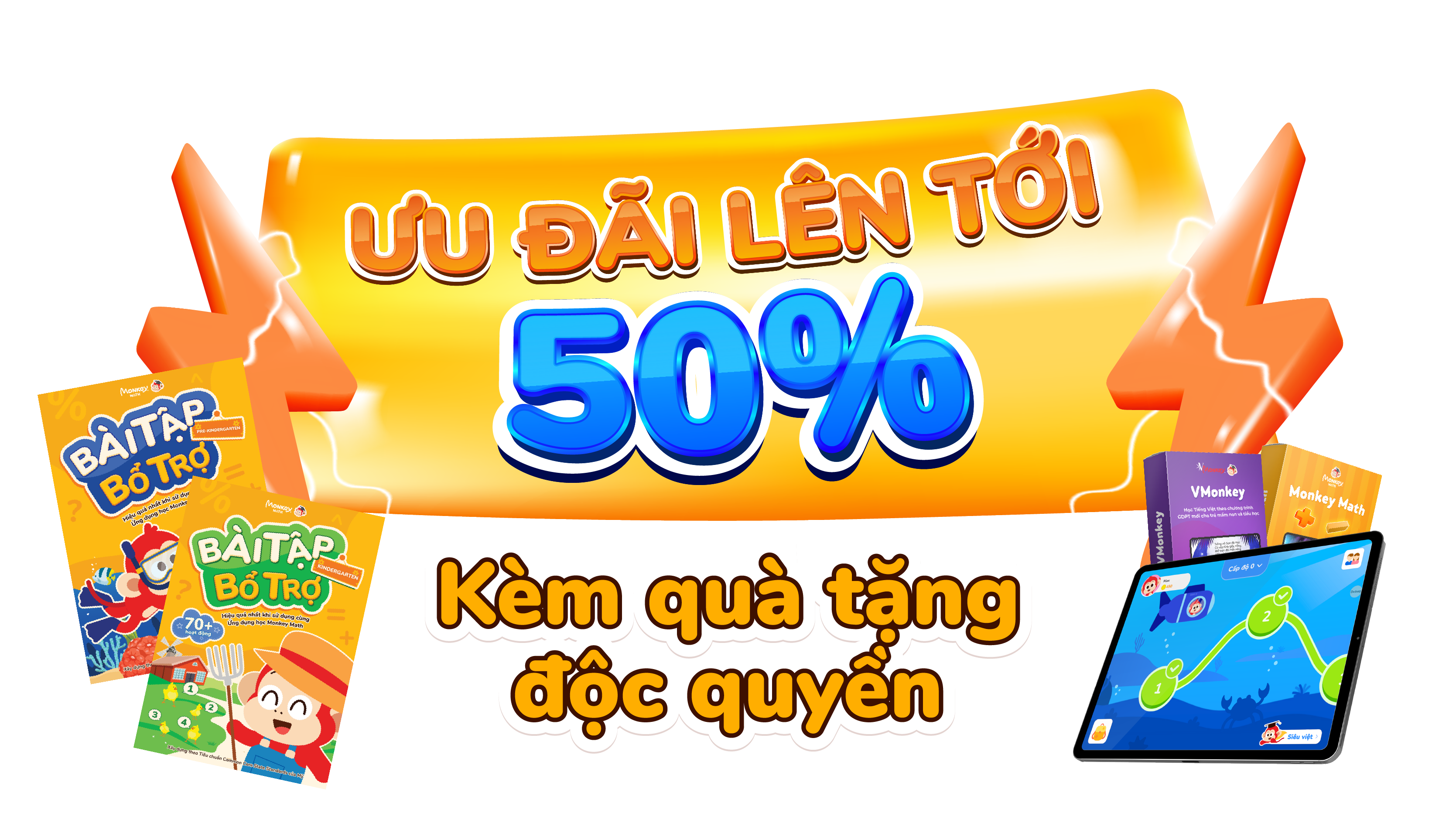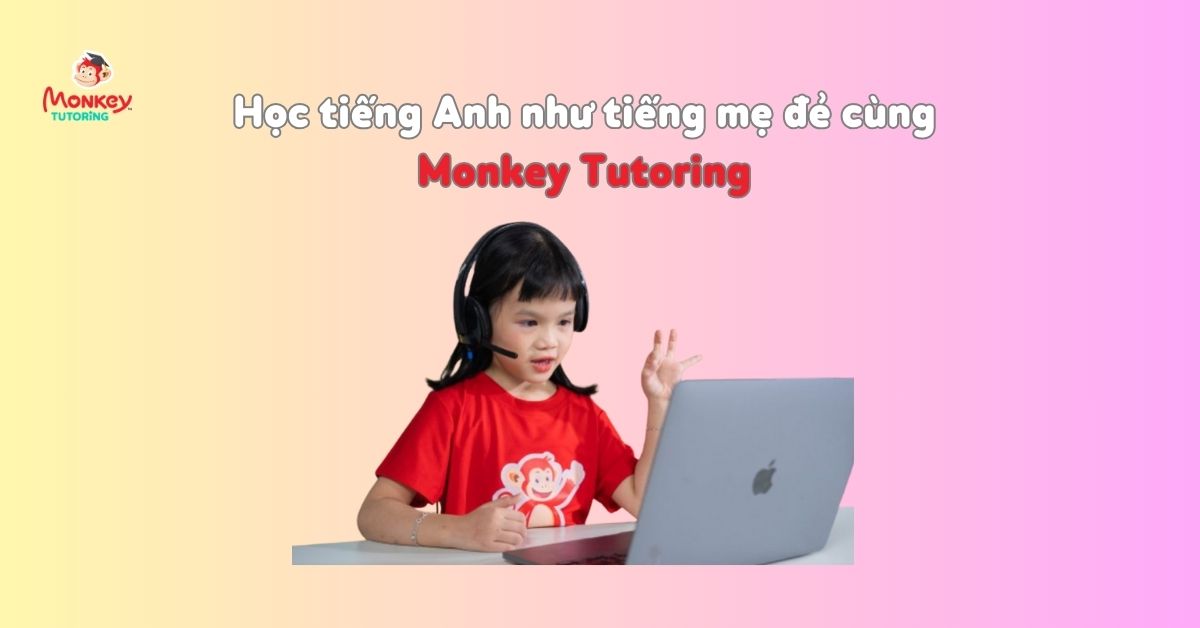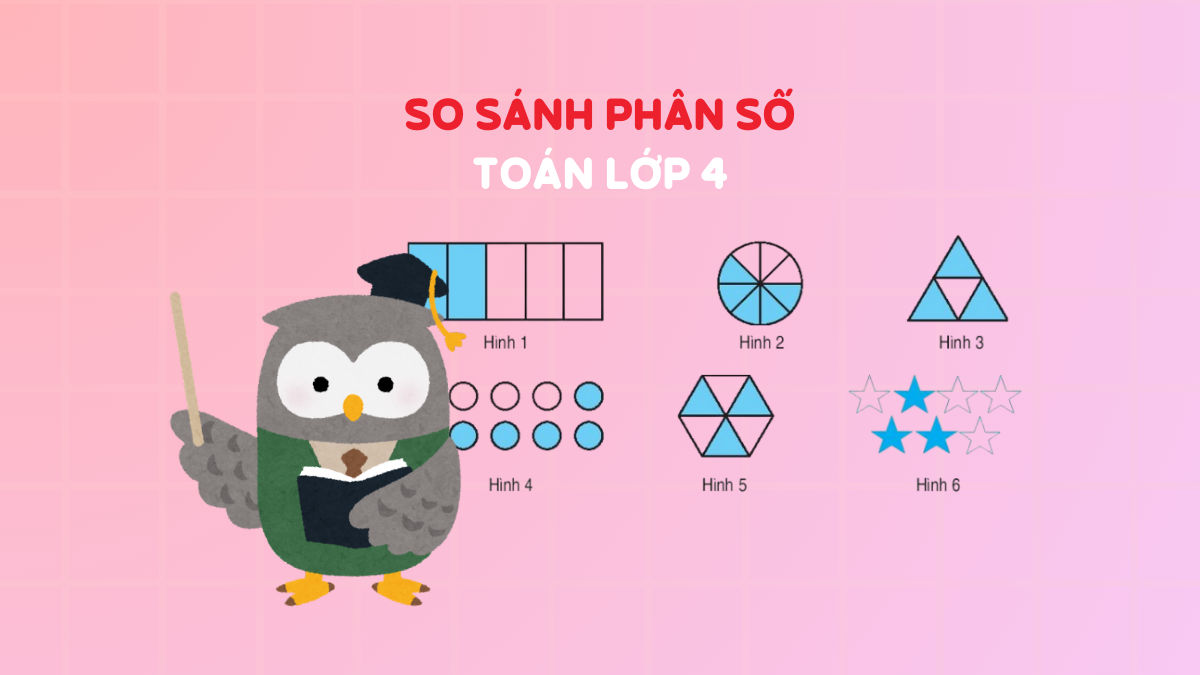Câu hỏi đuôi trong tiếng Anh không chỉ là một phần của ngữ pháp mà còn là thứ khiến giao tiếp trở nên thú vị hơn. Trong bài viết này, chúng ta sẽ khám phá hơn 100 bài tập câu hỏi đuôi kèm theo đáp án chi tiết được sưu tầm và chọn lọc, giúp bạn chinh phục tiếng Anh hiệu quả.

Tổng quan về câu hỏi đuôi
Câu hỏi đuôi, hay tag question, là một câu hỏi ngắn được thêm vào sau câu trần thuật để kiểm tra lại thông tin từ người nghe. Đây là dạng Yes/No Question (câu hỏi Yes/No) và thường được sử dụng trong giao tiếp tiếng Anh.
Ví dụ: Vietnam is a wonderful country, isn't it?
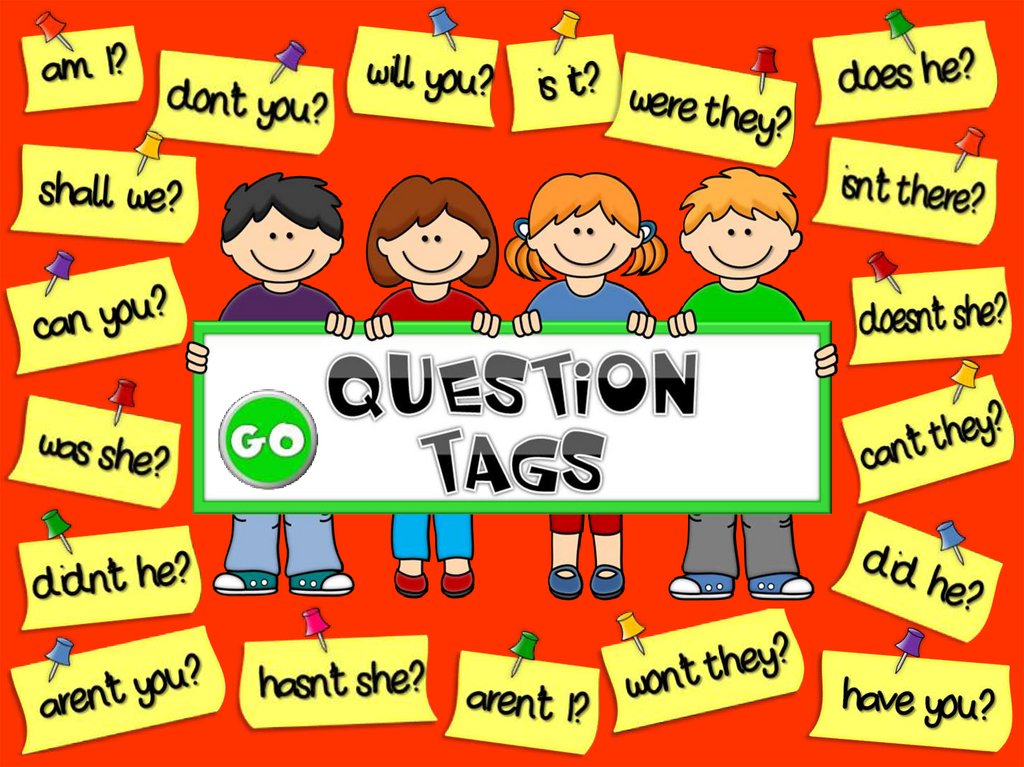
Cấu trúc câu hỏi đuôi và các trường hợp đặc biệt
Cấu trúc của câu hỏi đuôi khá đơn giản, bao gồm “mệnh đề” và “câu hỏi đuôi”, được ngăn cách nhau bởi dấu phẩy.
Cụ thể, câu hỏi đuôi có cấu trúc: S + V + O, trợ động từ + đại từ chủ ngữ của S?
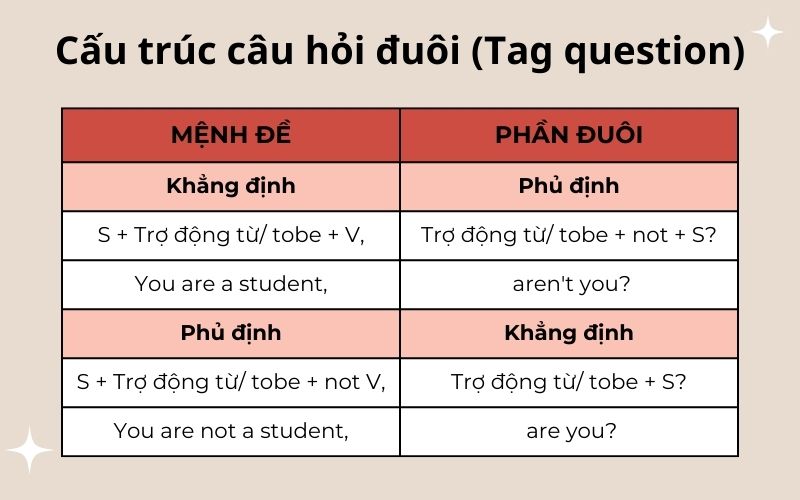
Vì câu hỏi đuôi phụ thuộc vào động từ của mệnh đề chính, vậy nên khi thì của câu thay đổi, động từ chính và câu hỏi đuôi cũng sẽ thay đổi theo.
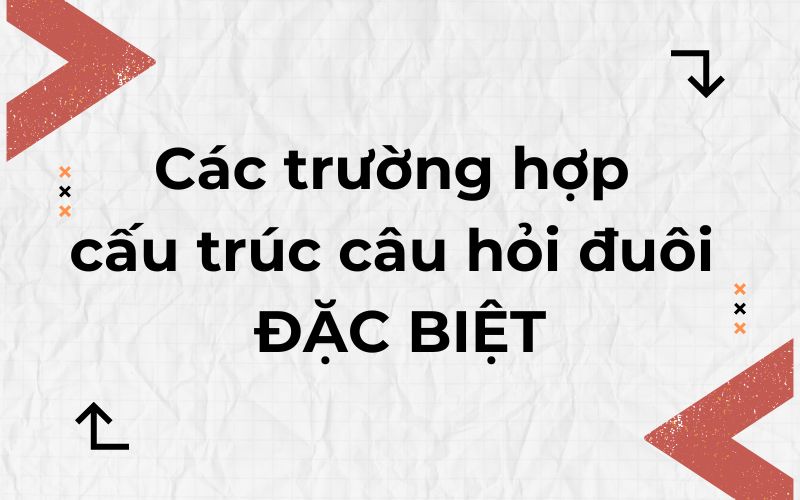
Bên cạnh đó, câu hỏi đuôi cũng có một số trường hợp ngoại lệ khi sử dụng. Cụ thể:
1. “Must”: Tùy vào nghĩa của câu, câu hỏi đuôi có thể khác nhau:
- Sự ngăn cấm: “must” → câu hỏi đuôi: “mustn’t”.
- Sự cần thiết: “must” → câu hỏi đuôi: “need”.
- Sự dự đoán: “must” → câu hỏi đuôi: “do/does”.
Ví dụ: “You must study hard.” → “Mustn’t you?”
2. Câu có mệnh đề phụ: Chủ ngữ câu hỏi đuôi sẽ theo chủ ngữ của mệnh đề phụ.
Ví dụ: “I think it is going to rain.” → “isn’t it?”
3. Bắt đầu bằng “Let’s”: Câu hỏi đuôi luôn là “Shall we”.
Ví dụ: “Let’s go to the park.” → “Shall we?”
4. Câu mệnh lệnh: Câu hỏi đuôi là “Will you”.
Ví dụ: “Close the door”→ “Will you?”
5. Câu cảm thán: Câu hỏi đuôi sử dụng trợ động từ Tobe ở hiện tại.
Ví dụ: “Such a lovely house” → “isn't it?”
6. Câu ước muốn có “wish”: Câu hỏi đuôi có cấu trúc “May + S”.
Ví dụ: “I wish I could travel.” → “May I?”
Đại từ bất định chỉ người: Chủ ngữ câu hỏi đuôi là “they”.
Ví dụ: “Somebody is knocking on the door” → “aren't they?”
Đại từ bất định chỉ vật: Chủ ngữ câu hỏi đuôi là “it” hoặc “they”.
Ví dụ: “Something is wrong with the car” → “isn't it?”
Trạng từ phủ định hoặc bán phủ định: Câu hỏi đuôi không cần thêm “not”.
Ví dụ: “You don't have any money” → “do you?”
100+ Bài tập câu hỏi đuôi có đáp án chi tiết
Câu hỏi đuôi, còn được gọi là câu hỏi phụ hoặc câu hỏi bổ sung, là một phần của câu mà được đặt sau dấu phẩy để yêu cầu xác nhận, đồng tình hoặc phản đối thông tin đã được nêu trong câu chính. Dưới đây là một số dạng bài tập về câu hỏi đuôi với đáp án chi tiết được sưu tầm và chọn lọc:
Dạng bài hoàn thành câu hỏi đuôi
-
You have never been to London, ________?
-
They didn't go to the party, ________?
-
There isn't a problem, ________?
-
Minh is a good student, ________?
-
They will be here soon, ________?
-
She is very happy, ________?
-
She hasn't finished her homework yet, ________?
-
I can't help you with this, ________?
-
It's raining outside, ________?
-
We should go to the doctor, ________?
-
This is your book, ________?
-
Let's go to the cinema, ________?
-
This dress is too expensive, ________?
-
He didn't know the answer, ________?
-
You don't like chocolate, ________?
-
She is a very talented singer, ________?
-
There are some apples in the fridge, ________?
-
You are going to the meeting, ________?
-
I am not late, ________?
-
They have already left, ________?
Đáp án:
-
have you?
-
did they?
-
is there?
-
isn't he?
-
won't they?
-
isn't she?
-
has she?
-
can I?
-
isn't it?
-
shouldn't we?
-
isn't it?
-
shall we?
-
isn't it?
-
did he?
-
do you?
-
isn't she?
-
aren't there?
-
aren't you?
-
am I?
-
haven't they?
Dạng chọn câu hỏi đuôi đúng để đi kèm với câu chính
1. Mary is a doctor, ________?
A. are they?
B. is she?
C. isn't she?
D. do they?
2. They didn't go to the park, ________?
A. didn't they?
B. did they?
C. are they?
D. do they?
3. There isn't a problem, ________?
A. isn't there?
B. is there?
C. are they?
D. do they?
4. She has finished her homework, ________?
A. has she?
B. hasn't she?
C. are they?
D. do they?
5. I can help you with this, ________?
A. can I?
B. can't I?
C. are they?
D. do they?
6. You have been to London, ________?
A. have you?
B. haven't you?
C. are they?
D. do they?
7. It's raining outside, ________?
A. are they?
B. do they?
C. is it?
D. isn't it?
8. We should go to the doctor, ________?
A. shouldn't we?
B. should we?
C. are they?
D. do they?
9. This is your book, ________?
A. isn't it?
B. is it?
C. are they?
D. do they?
10. They will be here soon, ________?
A. are they?
B. will they?
C. won't they?
D. do they?
11. Let's go to the cinema, ________?
A. are they?
B. shouldn't we?
C. shall we?
D. do they?
12. You don't like chocolate, ________?
A. do you?
B. don't you?
C. are they?
D. do they?
13. She is a very talented singer, ________?
A. isn't she?
B. is she?
C. are they?
D. do they?
14. He didn't know the answer, ________?
A. did he?
B. didn't he?
C. are they?
D. do they?
15. There are some apples in the fridge, ________?
A. are they?
B. do they?
C. are there?
D. aren't there?
16. You are going to the meeting, ________?
A. are you?
B. are they?
C. do they?
D. aren't you?
17. This dress is too expensive, ________?
A. isn't it?
B. is it?
C. are they?
D. do they?
18. They have already left, ________?
A. are they?
B. do they?
C. have they?
D. haven't they?
19. I am not late, ________?
A. am I?
B. aren't I?
C. are they?
D. do they?
20. She is very happy, ________?
A. isn't she?
B. is she?
C. are they?
D. do they?
21. That’s Bod’s, ____________?
A. is that
B. isn’t it
C. isn’t that
D. is it
22. We should call Rita, _______________?
A. should we
B. shouldn’t we
C. shall we
D. should not we
23. Monkeys can’t sing, ______________?
A. can they
B. can it
C. can’t they
D. can’t it
24. These books aren’t yours, ____________?
A. are these
B. aren’t these
C. are they
D. aren’t they
25. This is the second time she’s been here, ______________?
A. isn’t this
B. isn’t it
C. has she
D. hasn’t she
26. No one died in the accident, ______________?
A. did they
B. didn’t they
C. did he
D. didn’t he
27. The air-hostess knows the time she has been here, ______________?
A. does she
B. isn’t it
C. doesn’t she
D. did she
28. They must do as they are told, ________________?
A. mustn’t they
B. must they
C. are they
D. aren’t they
29. You’ve never been in Italy, _________________?
A. have you
B. haven’t you
C. been you
D. had you
30. He hardly has anything nowadays, _________________?
A. hasn’t she
B. has he
C. doesn’t he
D. does she
Đáp án:
|
1 |
2 |
3 |
4 |
5 |
6 |
7 |
8 |
9 |
10 |
|
C |
A |
B |
B |
A |
B |
D |
A |
A |
C |
|
11 |
12 |
13 |
14 |
15 |
16 |
17 |
18 |
19 |
20 |
|
C |
B |
A |
B |
D |
D |
A |
C |
B |
A |
|
21 |
22 |
23 |
24 |
25 |
26 |
27 |
28 |
29 |
30 |
|
B |
B |
A |
C |
B |
A |
C |
A |
A |
B |
Dạng bài sắp xếp các từ thành câu hỏi đuôi đúng
-
you / are / going / to the cinema / , / aren't / you / ?
-
she / doesn't / like / chocolate / , / does / she / ?
-
they / have / already / left / , / haven't / they / ?
-
he / isn't / very / tall / , / is / he / ?
-
we / can't / go / swimming / , / can / we / ?
-
she / will / be / here / soon / , / won't / she / ?
-
they / haven't / seen / the movie / yet / , / have / they / ?
-
he / used / to / live / in London / , / didn't / he / ?
-
you / are / not / feeling / well / , / are / you / ?
-
she / is / a / very / good / friend / , / isn't / she / ?
Đáp án:
-
You are going to the cinema, aren't you?
-
She doesn't like chocolate, does she?
-
They have already left, haven't they?
-
He isn't very tall, is he?
-
We can't go swimming, can we?
-
She will be here soon, won't she?
-
They haven't seen the movie yet, have they?
-
He used to live in London, didn't he?
-
You are not feeling well, are you?
-
She is a very good friend, isn't she?
Dạng tạo ra câu hỏi đuôi mới từ mệnh đề có sẵn dựa trên ý nghĩa của nó
-
There's something bothering me.
-
Everyone is waiting for you.
-
This is a beautiful day!
-
Don't forget to turn off the lights when you leave.
-
She is a very talented singer!
-
No one knows the answer to this question.
-
This dress is too expensive!
-
Everything is okay.
-
Don't forget to turn off the lights when you leave.
-
Someone has stolen my watch.
-
Everyone likes this food.
-
Everyone is waiting for you.
-
It's nothing important.
-
Please close the door.
-
She sings so well!
Đáp án:
-
There's something bothering me, isn't there?
-
Everyone is waiting for you, aren't they?
-
What a beautiful day, isn't it?
-
Remember to turn off the lights when you leave, will you?
-
She is such a talented singer, isn't she?
-
No one knows the answer to this question, do they?
-
This dress is incredibly expensive, isn't it?
-
Everything is okay, isn't it?
-
Remember to turn off the lights when you leave, will you?
-
Someone has stolen my watch, haven't they?
-
Everyone likes this food, don't they?
-
Everyone is waiting for you, aren't they?
-
It's nothing important, is it?
-
Close the door, will you?
-
What a good singer she is, isn't she?
Dạng phân biệt câu hỏi đuôi đã cho đúng hay sai
-
We wish to take a day off next week, don’t we? – (True/False)
-
I wish to see my children, don’t I? – (True/False)
-
Nothing was there, was it? – (True/False)
-
Do not touch that door, do you? – (True/False)
-
Something is coming, isn’t it? – (True/False)
-
Let’s follow the new mentor, don’t we? – (True/False)
-
When I was young, I rarely went out with friends, didn’t I? – (True/False)
-
What a beautiful lady, isn’t she? – (True/False)
-
You mustn’t use the company’s equipment for personal use, must you? – (True/False)
-
Everyone loves Taylor Swift, don’t they? – (True/False)
Đáp án:
-
False
-
False
-
True
-
False
-
True
-
False
-
False
-
True
-
True
-
True
Dạng bài xác định câu hỏi đuôi yêu cầu đồng tình hay phản đối:
-
They are coming to the party, aren't they?
-
She doesn't know how to cook, does she?
-
He has finished his homework, hasn't he?
-
They aren't going to the beach tomorrow, are they?
-
You have never been to Paris, have you?
-
She is a very good singer, isn't she?
-
He hasn't seen the movie yet, has he?
-
They will be here soon, won't they?
-
You are not feeling well, are you?
-
She is a very kind person, isn't she?
Đáp án
-
Yêu cầu đồng tình.
-
Yêu cầu phản đối.
-
Yêu cầu đồng tình.
-
Yêu cầu phản đối.
-
Yêu cầu phản đối.
-
Yêu cầu đồng tình.
-
Yêu cầu phản đối.
-
Yêu cầu đồng tình.
-
Yêu cầu phản đối.
-
Yêu cầu đồng tình.
Dạng tìm lỗi sai trong câu hỏi đuôi và sửa lại
-
Let’s go out for a walk, will we?
-
Phong isn’t listening to music, isn’t he?
-
He couldn’t do her a favour, couldn’t he?
-
I’m late to this meeting, am not I?
-
Turn off the fans before going out, will you?
-
After it gets dark, they should leave soon, should they?
-
Don’t forget to repair this car, won’t you?
-
That is his cat, is it?
-
Mia should pass her test tomorrow, should she?
-
Read my book, will you?
Đáp án:
-
will we → shall we
-
isn’t → is
-
couldn’t → could
-
am not I → aren’t you
-
will → won’t
-
should → shouldn’t
-
won’t → will
-
is → isn’t
-
should → shouldn’t
-
will → won’t
Một số lưu ý khi làm bài tập câu hỏi đuôi
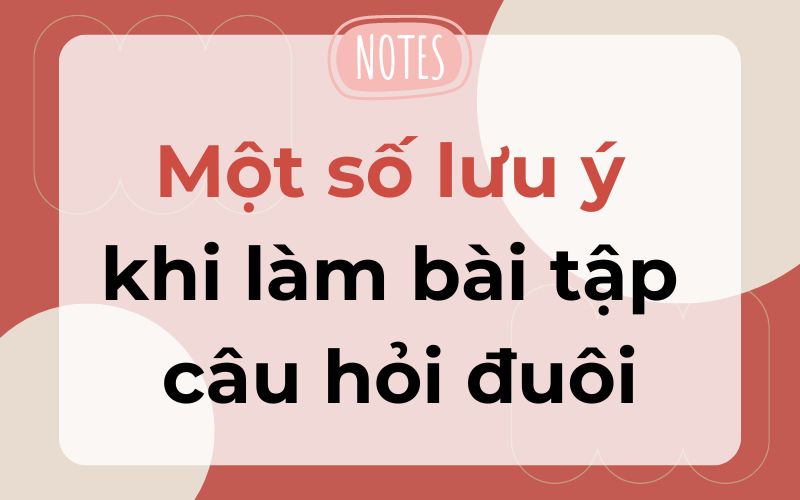
Để có thể dễ dàng làm được tất tần tật các dạng bài tập câu hỏi đuôi từ dễ đến khó, bạn cần lưu ý những điều sau:
Hiểu rõ cấu trúc câu hỏi đuôi
- Câu hỏi đuôi thường nằm ở cuối câu trần thuật và được sử dụng để xác minh thông tin hoặc yêu cầu người nghe hồi đáp.
- Động từ trong câu hỏi đuôi thường phản ánh thì của câu trần thuật.
Chú ý đến chủ ngữ
- Nếu chủ ngữ là đại từ, ta lặp lại đại từ. Ví dụ: “He is playing soccer, isn't he?”
- Nếu chủ ngữ là danh từ, ta dùng đại từ tương ứng thay thế. Ví dụ: “The girls wanted to go to the cinema, didn’t they?”
- Với everything, nothing, anything, something, cần dùng đại từ it cho câu hỏi đuôi. Ví dụ: “Everything is good, isn’t it?”
- Nếu chủ ngữ là đại từ bất định chỉ người như nobody, somebody, no one, someone,... ta dùng they trong câu hỏi đuôi. Ví dụ: “Nobody asked for me, did they?”
Chú ý đến động từ
Có trợ động từ (do, does, did, have, has):
Nếu trong mệnh đề chính có trợ động từ, ta sử dụng nó ở dạng phủ định để tạo thành câu hỏi đuôi. Ví dụ: “You’ve got a car, haven’t you?”
Trường hợp không có trợ động từ:
- Nếu câu trần thuật ở thì hiện tại đơn, câu hỏi đuôi sẽ sử dụng “do/does” hoặc “am/is/are”. Ví dụ: “Tom likes football, doesn’t he?”
- Nếu câu trần thuật ở thì quá khứ đơn, câu hỏi đuôi sẽ sử dụng “did” hoặc “was/were”. Ví dụ: "She went to the store yesterday, didn't she?"
Thường xuyên luyện tập các bài tập câu hỏi đuôi
Làm nhiều bài tập câu hỏi đuôi giúp bạn làm quen với cấu trúc và được thực hành sử dụng chúng.
Hành trình chinh phục "câu hỏi đuôi" sẽ không hề đơn giản, nhưng với sự kiên nhẫn và luyện tập các bài tập câu hỏi đuôi thường xuyên, bạn sẽ nhanh chóng nắm trọn kiến thức và khiến việc giao tiếp tiếng Anh trở nên dễ dàng hơn.


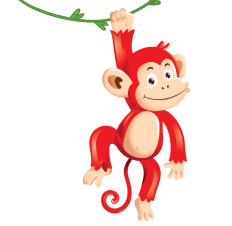
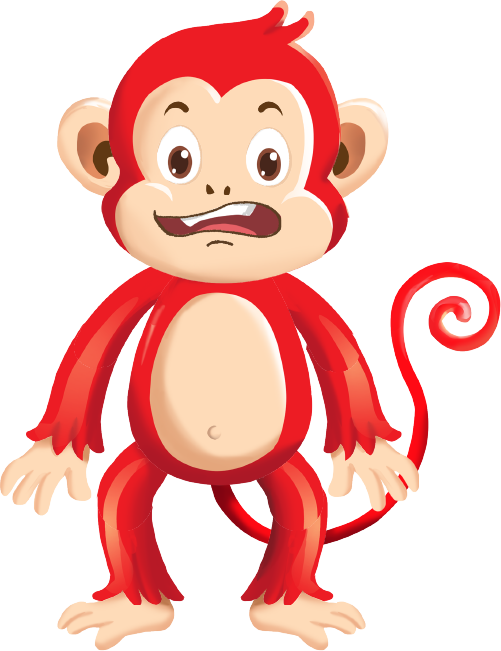

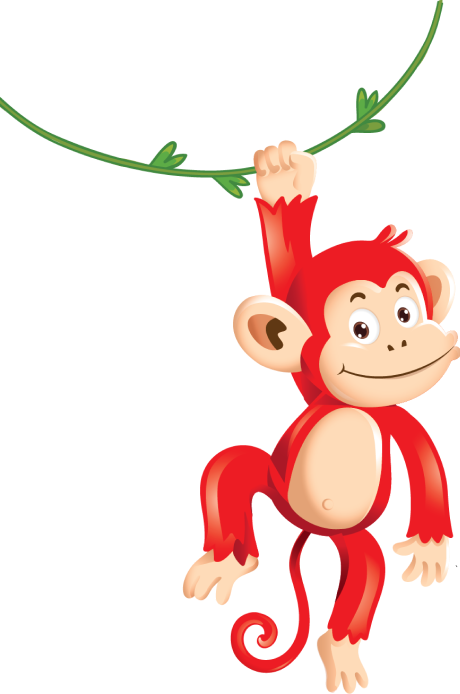
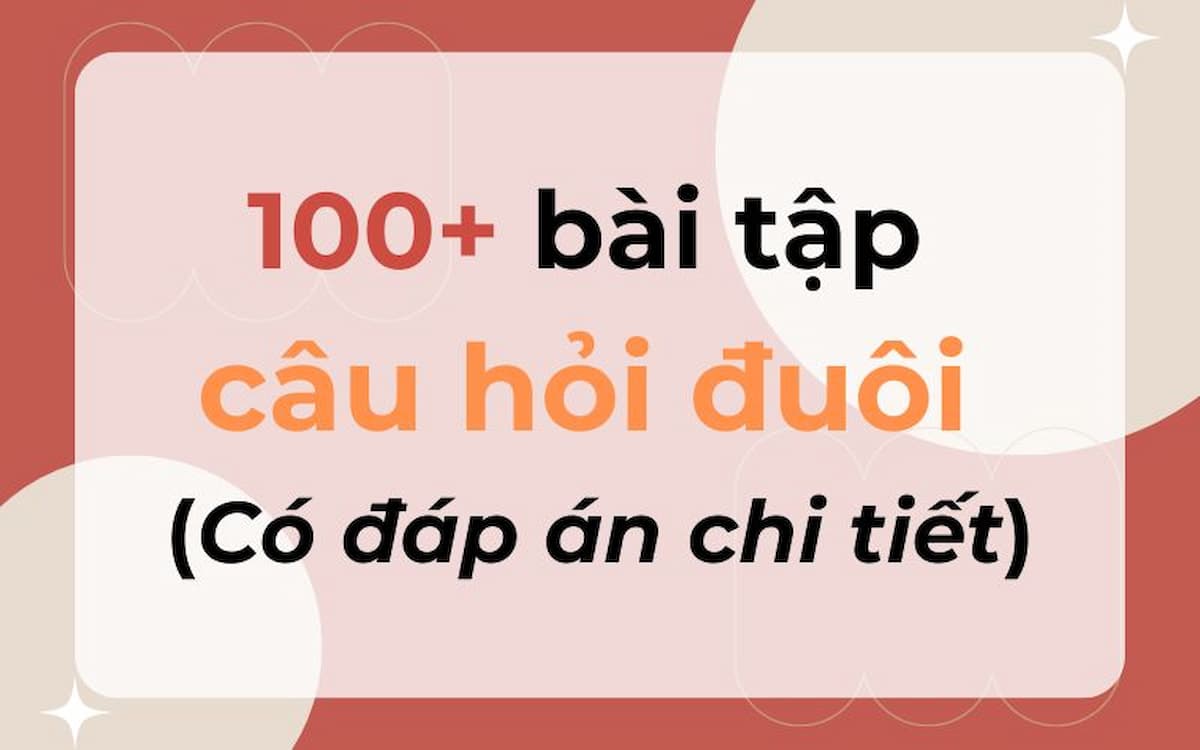
.png)
.png)
